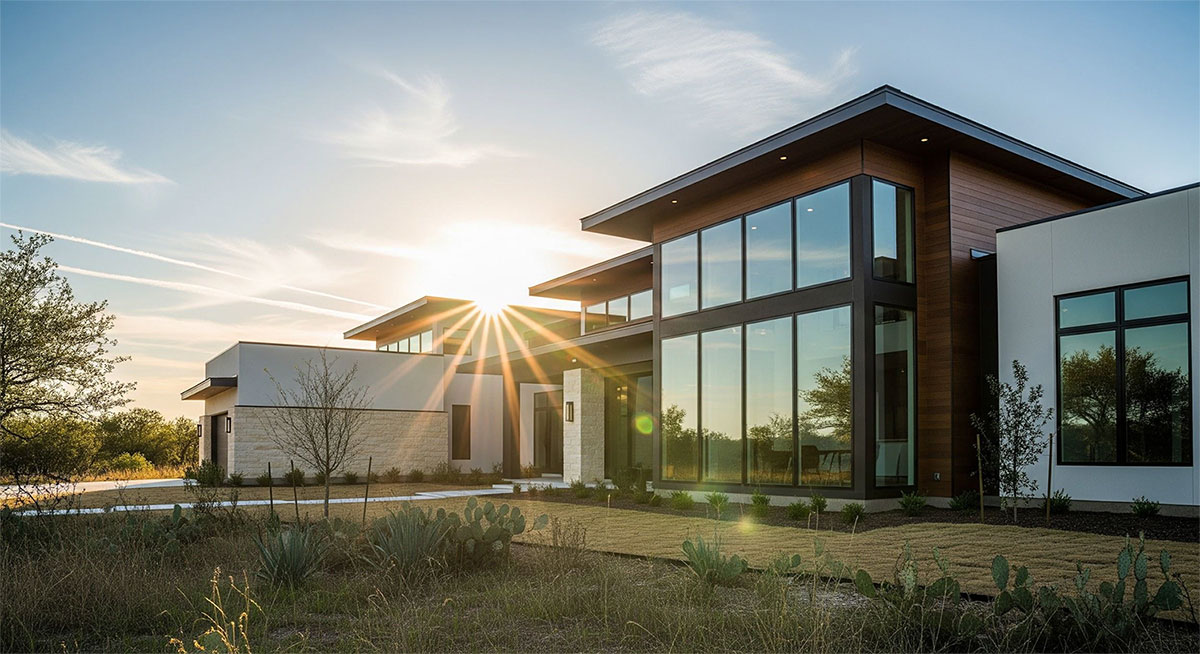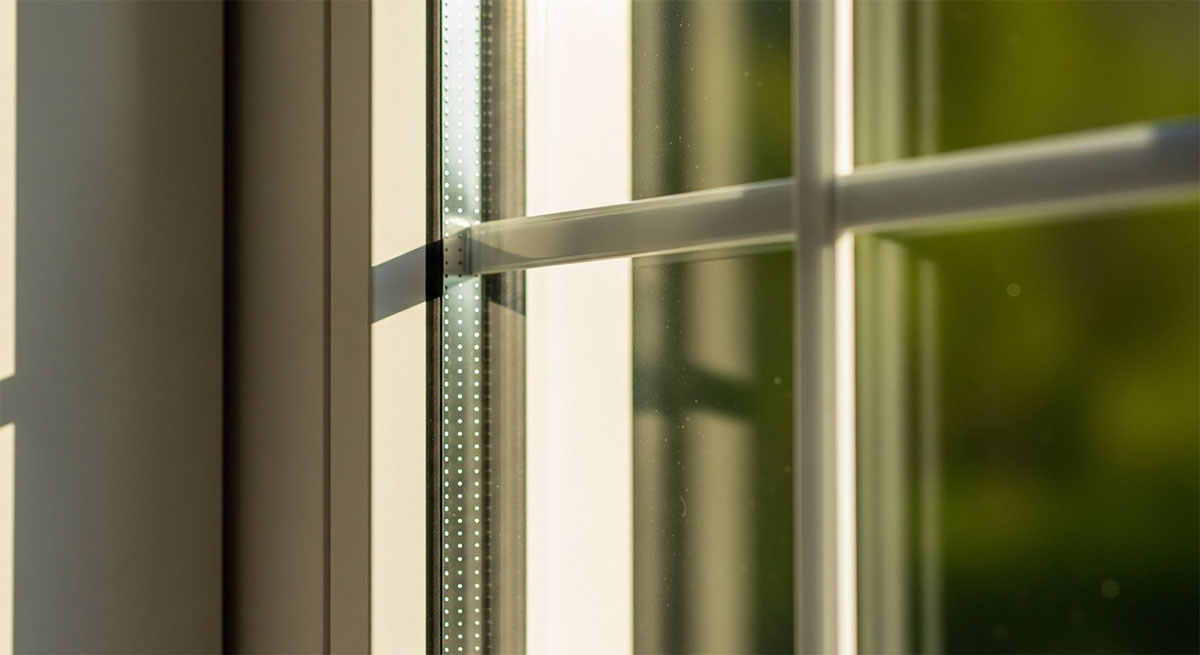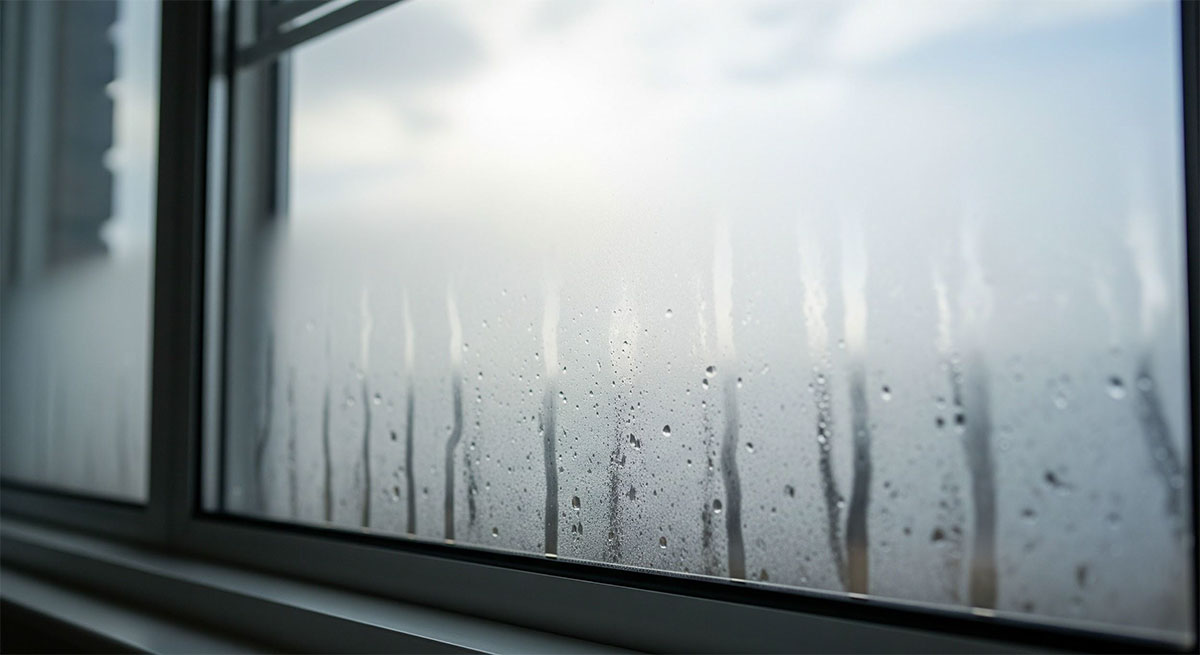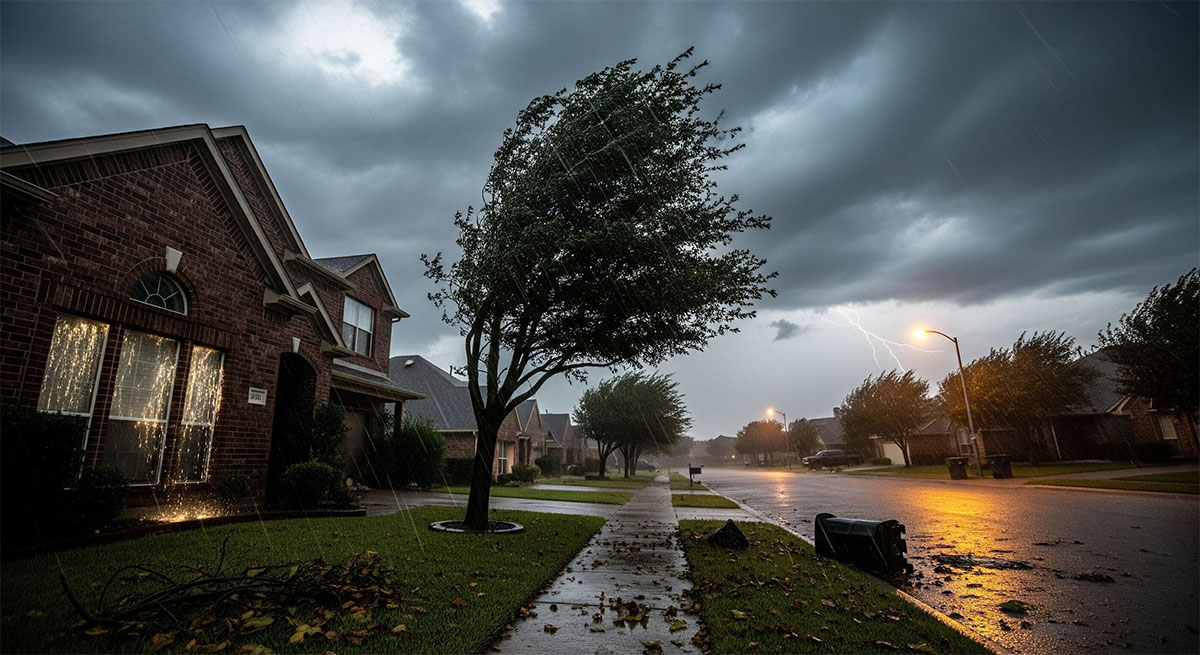If your windows are ten to fifteen years old, it may be time to take a closer look at how they are holding up. The lifespan of your windows depends on the materials, the quality of installation, and how much weather exposure they face. Here is what Texas homeowners need to know.

Texas weather is unpredictable and can affect your windows in many ways.
The Texas Sun Breaks Down Materials Faster
Texas sunlight is stronger than what most windows are designed for. Intense ultraviolet rays constantly hit your glass and frames, breaking down older window materials much sooner than expected.
Wood dries, cracks, and warps. Aluminum absorbs heat, expands, and weakens. Older vinyl becomes brittle and begins to lose its seal. Even the best windows struggle after years of direct Texas sunlight.
This is why modern energy efficient windows with improved vinyl frames are the best option for long term durability in our climate.

Texas sunlight breaks down older window materials faster than most homeowners realize.
Heat Causes Older Windows to Expand and Contract
Single pane windows suffer the most, but older aluminum frames are not far behind. When these frames heat up, they bend slightly, and those small movements can break the seal between the glass panes. Once that happens, moisture and fog start appearing between the glass.
Modern vinyl frames resist this movement and hold their shape much longer. That difference can add years to the lifespan of your windows.

When windows expand and contract from heat, seals fail and fogging begins.
Storms and High Winds Accelerate Wear and Tear
High winds push and pull on old frames. Flying debris impacts the glass. Heavy rain sneaks into weakened seals. It all adds up to reduced lifespan and more frequent repairs.
Impact resistant glass and modern frames are designed to withstand these conditions, but older

Storms and high winds speed up the aging of old windows in Texas homes.
How Long Windows Actually Last in Texas
While manufacturers often say windows last twenty to thirty years, that number usually applies to mild climates. In Texas, the true lifespan looks more like:
Vinyl windows installed correctly: fifteen to twenty years
Aluminum windows: ten to fifteen years
Wood windows: ten to twelve years
Single pane windows: often less than ten years
These numbers change depending on sun exposure, storm activity, and the quality of installation. Homes facing west or south tend to see the fastest deterioration because they take the full force of the afternoon sun.
When Your Windows Are Past Their Lifespan
- Your energy bill keeps climbing
- Rooms feel hotter or colder than others
- Fog or moisture appears between panes
- You hear outside noise clearly
- Frames are cracked or soft
- Windows stick or refuse to open
If any of these are happening in your home, your windows are losing their insulation value. That means your home comfort and energy efficiency are only going to get worse.

Drafts, noise, and fogging are clear signs your windows are reaching the end of their lifespan.
Upgrade Once and Enjoy the Benefits for Years
Replacing your windows is one of the best investments you can make in a Texas home. Modern windows are built to handle long periods of heat, UV exposure, sudden temperature changes, and heavy storms.
They improve comfort, lower energy bills, reduce noise, and instantly boost the look of your home. Most importantly, they give you peace of mind knowing your windows are built for Texas weather, not worn down by it.
At Maverick Windows, we help homeowners across the state choose long lasting options designed specifically for our climate. From window replacements in San Antonio to installations across Dallas and Fort Worth, our products are built to perform where other windows fail.

Maverick Windows
Serving Dallas, Houston, San Antonio, Lubbock and surrounding areas
(800) 972-3631
https://maverickwindows.com
